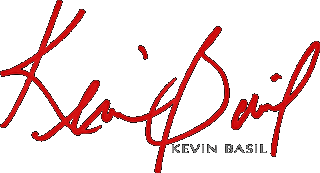Allow Me to Clarify
Warning: Undefined property: linknotes::$are_links in /var/www/vhosts/basil/kbsite/blog/wp-content/plugins/linknotes.php on line 73
I have known for a long time that ordinary work can be “special, full-time service” for the Lord, open to talented children in Christ’s body. But that aesthetic obedience is required of everyone by the Lord—artist or not—is a thesis I am only beginning to probe with understanding. It is an imperative, I believe, full of challenge, comfort, rich freedom and basic shalom. …I try to reform aesthetics away from esoteric byways. Aesthetic theory shall show its redemptive service best if it can begin to help men and women find, with integrity, the way of the Lord for the aesthetic dimension of our daily lives.
It truly pains me to see my brother eschewing the service of Mr. Calvin Seerveld. Mr. Seerveld labors to bring the aesthetic back into the daily life of the Christian. Myself, I cannot cheer such a service heartily enough. Moreover, likening the artistic vocation to the work of God, as he does in likening it to rainbows, has no flaw except perhaps that of hubris — had the Lord himself not already likened us to himself by creating us in his image.
It pains me even more that my brother did not himself research the quoted text any further than the quote from the Kentucky Clay Rambler’s site. As Mr. Seerveld says even further along in his preface,
When you want to find out how God ordered plants to grow, you don’t go study the synoptic Gospels: you go examine plants with a sharp knife and microscope. …If you must decide, so you can give leadership, on whether Chagall’s stained glass window honouring the late Mayor Daley in the Art Institute of Chicago is more or less significant than the striking piece by Abraham Rattner that takes a whole wall of the downtown loop synagogue, you don’t go read Paul’s letters, the Psalms, or even Isaiah 40 to look for information on “beauty”: instead, you study the art for hours, learn the composer or artist’s whole oeuvre to get context, examine the history of music, memorial and cult artistry, take a considered stand on the the nature of art, and slowly begin to discern what counts.
I might add, If you wish to critique an author, read his book! I don’t myself know very much about Mr. Seerveld. I must admit that my education did not bring me into contact with him, as it did with Hans Rookmaaker, Francis Schaeffer, Frank Schaeffer, Frank Gabelein, Dorothy Sayers, and a host of others who labored to bring Beauty back to the consciousness of evangelicals. Some, like myself and Frank Schaeffer, eventually gave up and returned to classical Christianity. Others, like Calvin Miller and Mr. Seerveld, continue to try to work within the context of a Reformed theology to support the existence of Beauty in the daily commons of Christian life.
I should like to point out, however, that this post is worth very little in an actual discussion of Rainbows for the Fallen World, mostly because I have not actually read the book. I only trotted myself down to the Asbury College library and read the preface and introduction — and those briefly.
Primarily, I wanted to take my brother to task for being overly critical for no apparent reason except that he happens not to like rainbows. “As a classically trained artist, I cringe to think that books like this are actaully [sic] being sold and read.” As a classically trained art historian, I cringe to think that you have sold our common birthright for the chance to ejaculate unfounded feelings at your whim.
“Art is certianly [sic] in no way like rainbows. God did not give a fallen world rainbows. God gave a fallen world beauty. You cannot open your eyes without being assaulted by the majesty and beauty of the art that God has wrought.” This statement makes no sense as a criticism if you’ve read even the introduction, wherein the author paraphrases the entirety of Psalm 19, “The heavens declare…,” and then proceeds to explain how all of creation testifies to God. It also makes no sense in a Christian worldview which posits that all of creation is the work of God. Even hyperbolically or metaphorically (which, I should hasten to point out, is exactly how Mr. Seerveld uses “rainbows” in the dominant theme of his book), it just does not make sense. Perhaps you do not like rainbows. That is between you and your creator.
Finally, I would like to defend myself. “A friend
of mine once said that he believed that the image of God was a rational mind.
I agree with this in part, but would like to augment that with saying that
artistic ability is the direct result of our reflecting the Creator.” You have not augmented the statement; you have instead focused on a subset of it. Reason is required to commune with God in creation: whether through Truth or Goodness or Beauty. Reason is also required to cooperate with the energies of God in creating objects of Beauty. Reason moves the will to act in accordance with the final end of all things, God, whether via Truth propositionally, Goodness actively, or Beauty aesthetically. Restricting reason to only the propositional intellect negates the possibility of intuition also being rational. And removing creative activity from the realm of reason opens a door that leads to several untenable results — not the least of which being the tautology that creativity, and perhaps Beauty itself, is therefore necessarily irrational.
Obviously, all of that requires more elaboration which I am not prepared to give at present. I simply wanted to clarify the citation, as the gaunt image of reason implied by the context does not belong to me.
